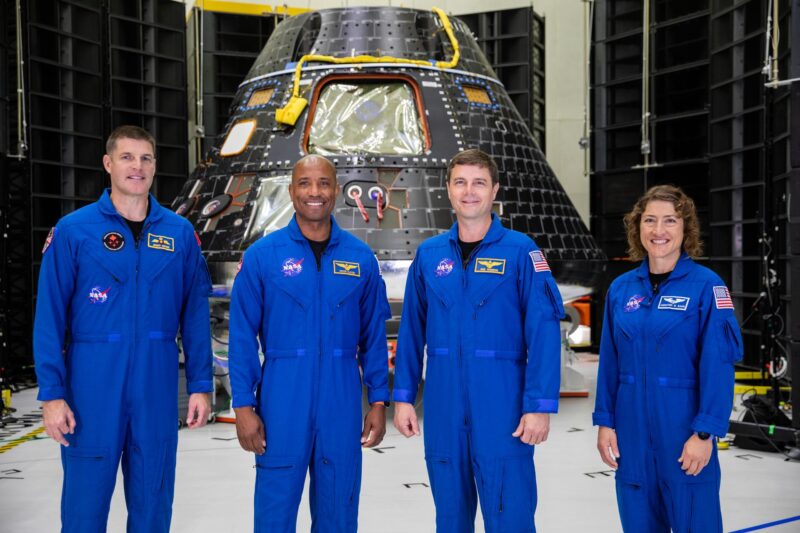
Throughout NASA, excitement continues to build for Artemis 2, the first crewed mission to the Moon in over fifty years. On Tuesday, astronauts Reid Wiseman, Victor Glover, Christina Koch, and Jeremy Hansen came face-to-face with the Orion spacecraft which will carry them to the Moon. The capsule is currently undergoing final assembly inside the Kennedy Space Center’s Operations and Checkout Building. NASA officials took advantage of the crew’s visit to provide the public with an update on the status of Artemis 2. Their testimony reveals the remarkable progress which has recently been made towards this historic mission.
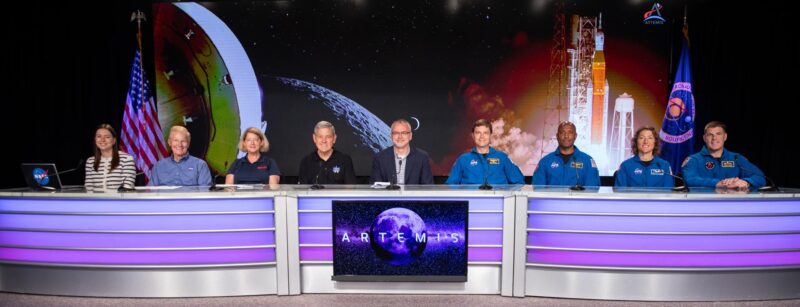
“It was a great day yesterday,” said Commander Reid Wiseman. “When you walk around the corner of the Neil Armstrong Operations and Checkout Facility, and there’s the spacecraft that you are going to ride in… We got to look inside. It was really quite fascinating.” The astronauts’ tour of the Kennedy Space Center allowed them to become acquainted with the cabin which they will occupy during their ten-day flight. In a prior interview with AmericaSpace, Orion Crew Systems Integration Manger Jason Hutt described this compact yet brilliantly organized volume in extensive detail. Much of the crew’s scheduled training will revolve around how to live and work inside their spacecraft, the likes of which have not been seen for 50 years.
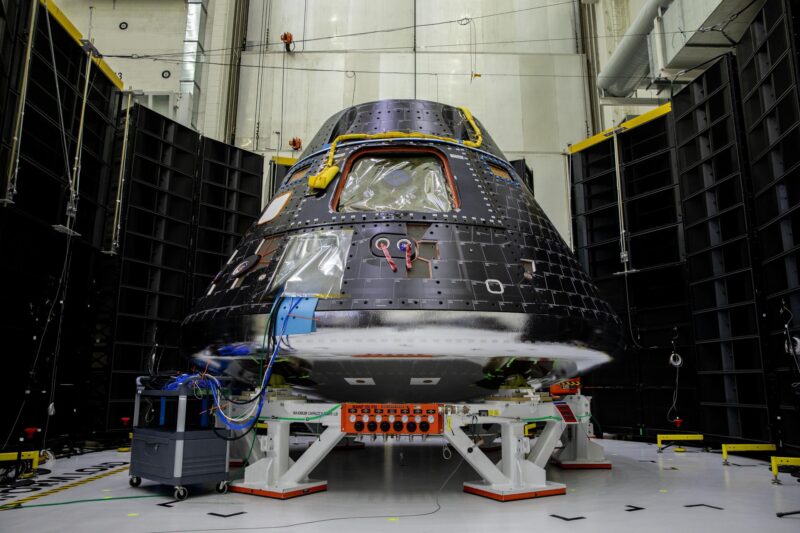
Over the span of a handful of months, Wiseman’s ship has morphed into an essentially complete spacefaring vehicle. Orion received its blunt heat shield in June. The 10 panels which form its conical upper surface, or backshell, followed over the past month. The backshell is covered in a mosaic of upgraded black Space Shuttle tiles, which once coated the winged orbiters’ underbellies. The installation and replacement of these tiles is relatively straightforward, and they give Orion a distinctive appearance relative to the Apollo Command Module.
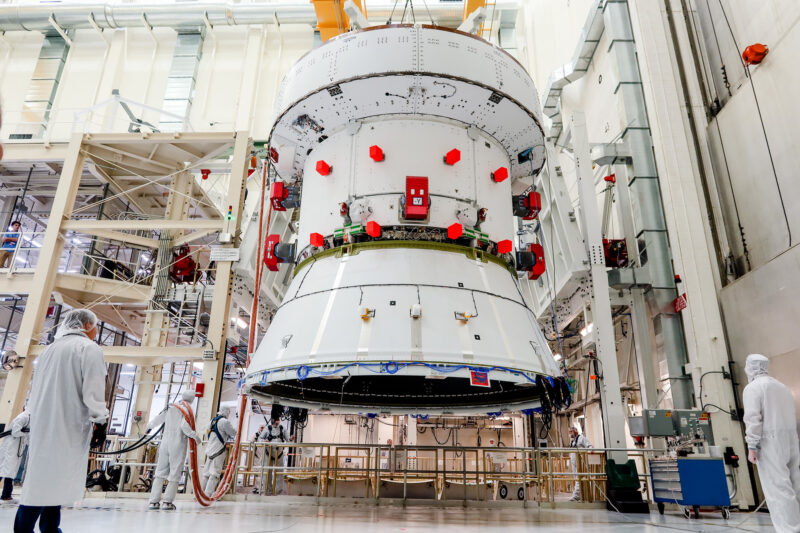
NASA is currently preparing to run Orion through a bevy of tests to verify that its systems operate as intended. When Wiseman, Glover, Koch, and Hansen first saw their capsule, it was surrounded by an array of oversized speakers. These speakers will be used to blast the Crew Module (CM) with a range of sound wave frequencies in what is known as a Direct Field Acoustics Test. The intense vibrations from the speakers simulate the forces of a rocket launch, and verify that the welds and bolts which hold the capsule together will not fail during its climb to orbit. The European Service Module (ESM) which will propel Orion in deep space recently passed its own acoustics test with flying colors. Its solar panels are now being removed and inspected ahead of its integration with the CM. According to Jim Free, NASA’s Associate Administrator for Exploration Systems Development, the assembly of Orion is currently the pacing item for Artemis 2. Even after the CM is mated to the ESM later this summer, the two vehicles will need to be put through a series of thermal and vacuum tests, which will occupy the remainder of the year.
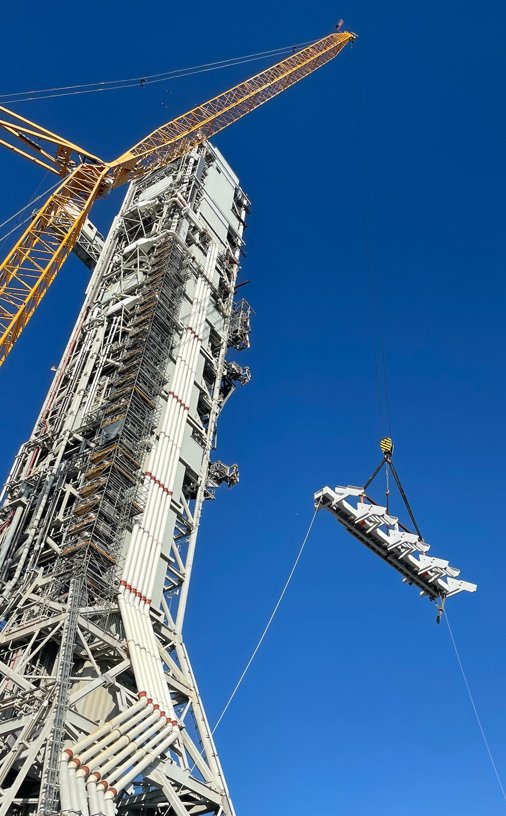
Progress also continues apace on the the Space Launch System (SLS) rocket which will propel Wiseman, Glover, Koch, and Hansen into orbit. The rocket’s massive Core Stage was scheduled to be completed in February. However, its assembly was delayed by an unspecified issue with its “downcomers,” which are the two large pipes which transport liquid oxygen propellant to its engine section. “The Boeing team at (the Michoud Assembly Facility) has a good handle on the work,” said Free. “I don’t expect it to go much past November.” The SLS for Artemis 2 is still far ahead of schedule, and the stage will not be needed until NASA begins stacking the rocket next February. During the same November timeframe, the Mobile Launcher which will be used to transport and fuel the rocket will be rolled to Launch Complex 39B for testing. Damage to the cable which supports its Crew Access Arm delayed this milestone by two weeks. Once the 380-foot-tall tower reaches the launch pad, NASA will test the new slidewire baskets which will whisk the crew to a reinforced bunker in the event of an emergency prior to launch.
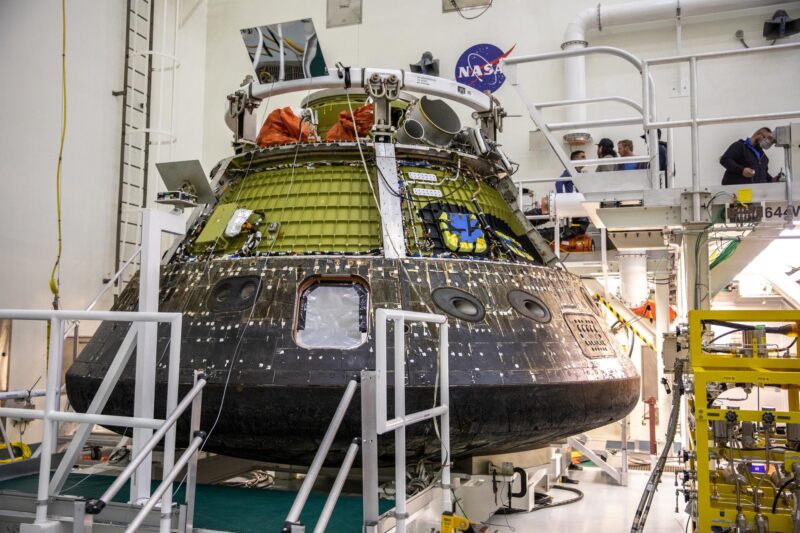
Simultaneously, Free’s team continues to diligently review the data from Artemis 1. In particular, they are focused on a potential issue with Orion’s heat shield. During Artemis 1’s return to Earth, pieces of the AVCOAT thermal protection system unexpectedly splintered off in chunks, rather than evenly and steadily ablating. No facility on Earth can simulate the reentry of a crewed spacecraft at Mach 32, so such a surprise was, perhaps, to be expected. The heat shield is the only barrier standing between the crew and a 5,000-degree Fahrenheit plasma, and understanding any flaws in its design is Free’s top priority.
While the Orion team has several theories about the root cause of this behavior, they are still settling on a final conclusion. Recently, they tested two AVCOAT samples inside an arc jet at NASA’s Ames Research Center. Free stated, “The only thing that carries over from Artemis 1 is engineering. We’re using all-new hardware, so vigilance and calling out problems when things aren’t right is really important.” “Every time I see Jim, he knows that I’m coming to talk about the heat shield,” adds Wiseman with a smile. “We have a lot of strong trust in this team. There are a lot of very talented researchers and engineers looking at this problem.”
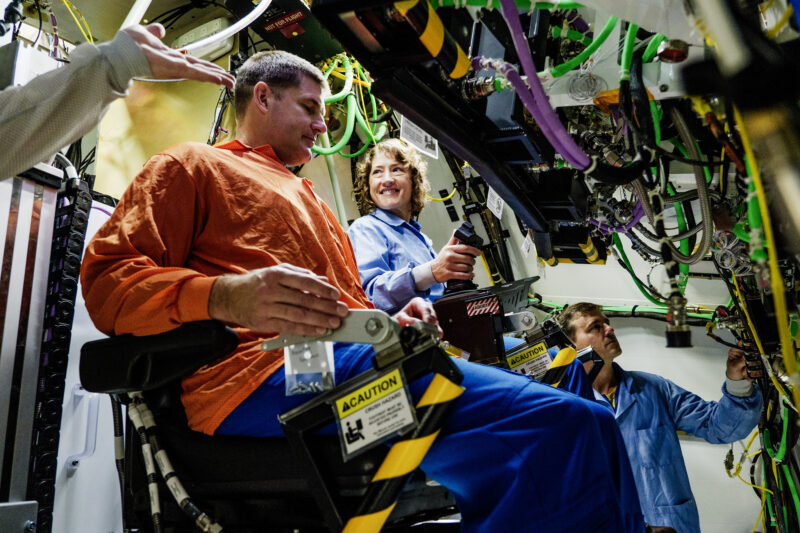
As for the quartet of astronauts who will ride these vehicles, they seem to be enthusiastic about the journey which lies ahead. Following their assignment to Artemis 2 in April, Wiseman, Glover, Koch, and Hansen have travelled around the country to inspect key facilities and to learn from the experts who work there. Much of their time has been spent at the Johnson Space Center, where they received lessons on spacecraft systems and practiced egressing their capsule after splashdown. They also inspected Orion’s controls and software at Lockheed Martin’s headquarters in Colorado, and they embarked upon the U.S.S. John P. Murtha to observe a recovery test.
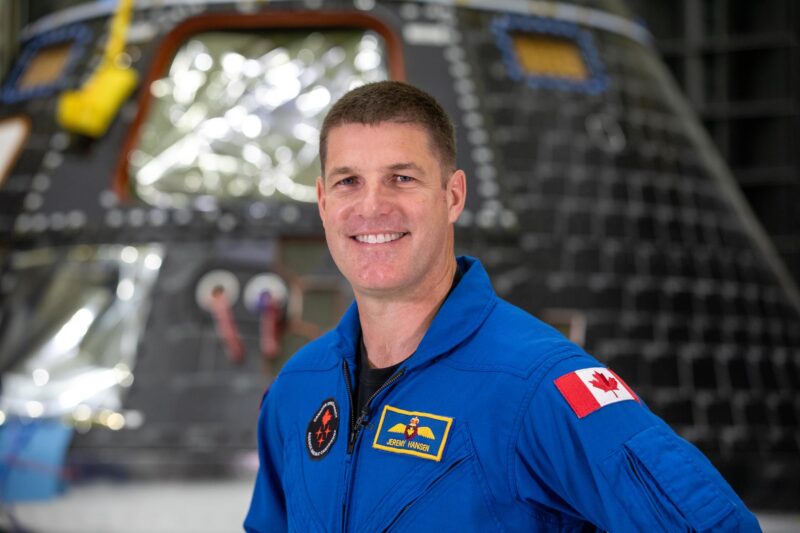
The Kennedy Space Center is the latest stop on the crew’s itinerary. “Seeing the capsule sent shivers down our spines as we saw it for the first time inside,” said Mission Specialist Jeremy Hansen. “Real hardware made a real impression. Something that stood out for me as we’ve been digging deeper into the systems is that… I knew going to the Moon is hard. Administrator (Bill Nelson), you talked about it. President Kennedy talked about it. But, boy, it’s harder than I thought. As I start to look at all the systems and all the people who are trying to get to the solutions we need to get to the moon and back, and still be breathing when we land in the Pacific Ocean, it makes an impression.”
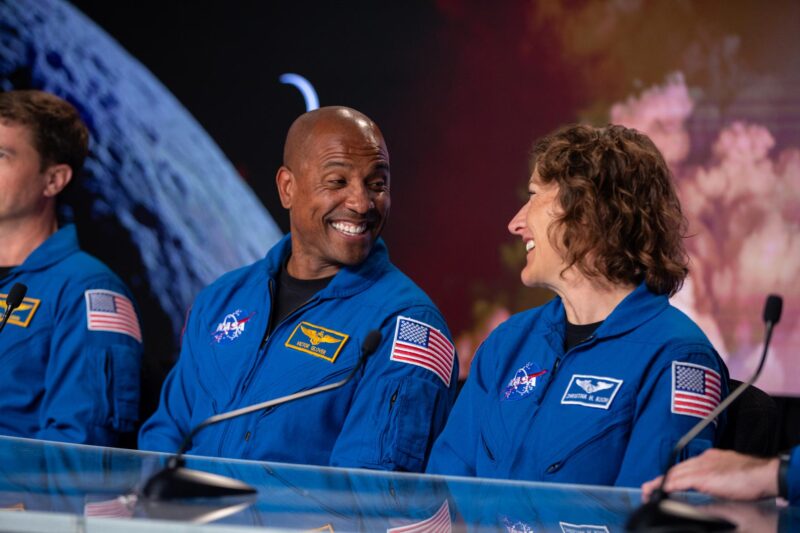
When they are not poring over their spacecraft’s systems, the astronauts and their families are preparing for the mental challenge of an unprecedented and risky test flight. Artemis 2 Pilot and U.S. Navy veteran Victor Glover is no stranger to this uncertainty, and he is open about the importance of treasuring the present moment with loved ones. “I have a family,” Glover said. I’m a husband and a father. And just the time that I get to spend with them – and they understand how hard we are working to make this successful – just being home and being able to relax is a win in and of itself.”
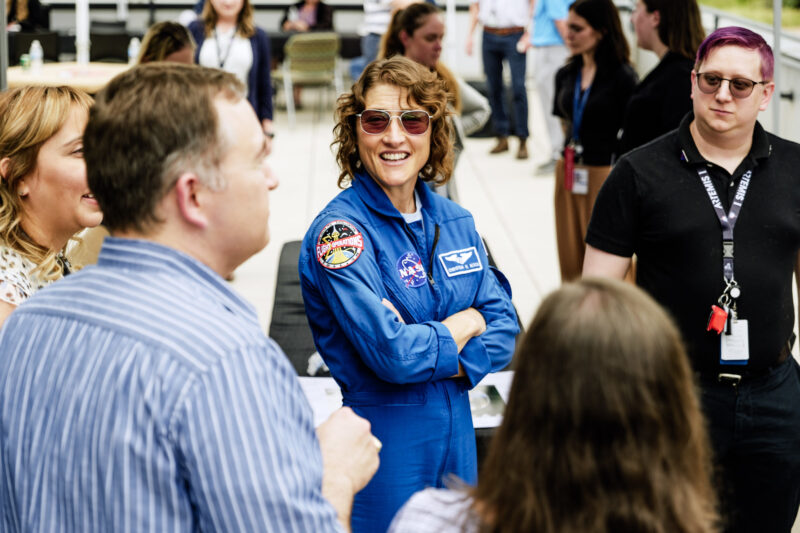
Mission Specialist Christina Koch emphasizes the importance of teambuilding in the months leading up to launch. On several occasions, Koch has attributed the success of her groundbreaking year-long ISS mission to the camaraderie of her international crew. She is optimistic that her new crew will be similarly productive. “One of the fun things that we do as a crew is to get our families together. When we travel, oftentimes our families will come, and they will get to know each other. We feel like a family in and of ourselves, and I think they are also feeling that way.” Koch added that the crew went to a restaurant together during their visit to the Space Coast. She says that they plan to continue the tradition of group meals while they are living inside Orion.
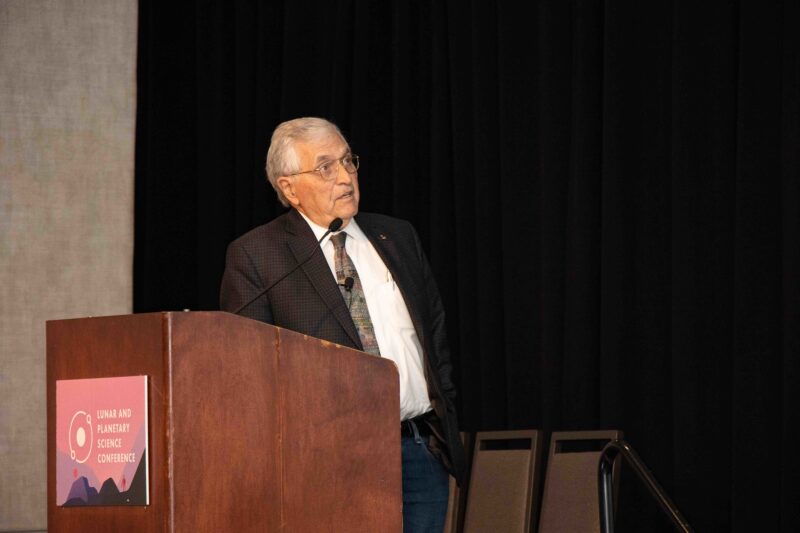
Finally, the past four months have seen a symbolic passing of the torch from America’s spacefaring pioneers to the Artemis generation. “I almost missed a call from General Tom Stafford (Apollo 10 Commander) because I thought he was a telemarketer,” recalled Wiseman. “What really shocked me was how excited he was that we are going back to the Moon for the agency, for the nation, and for the planet.” Glover added, “Someone who is very active in lunar science, and obviously in the architecture that we are using to explore the Moon and beyond, is Jack Schmitt (Apollo 17 Lunar Module Pilot). He’s still around, he’s still very active, and to see his excitement and continued enthusiasm about this project is great.” Glover has also shared extensive conversations about “human nature and ancient wisdom” with Apollo 9 Lunar Module Pilot Rusty Schweickart. While he would not reveal the details of their discussions, given Glover’s eloquence and Schweickart’s eccentricity, their conversations were bound to be enlightening.
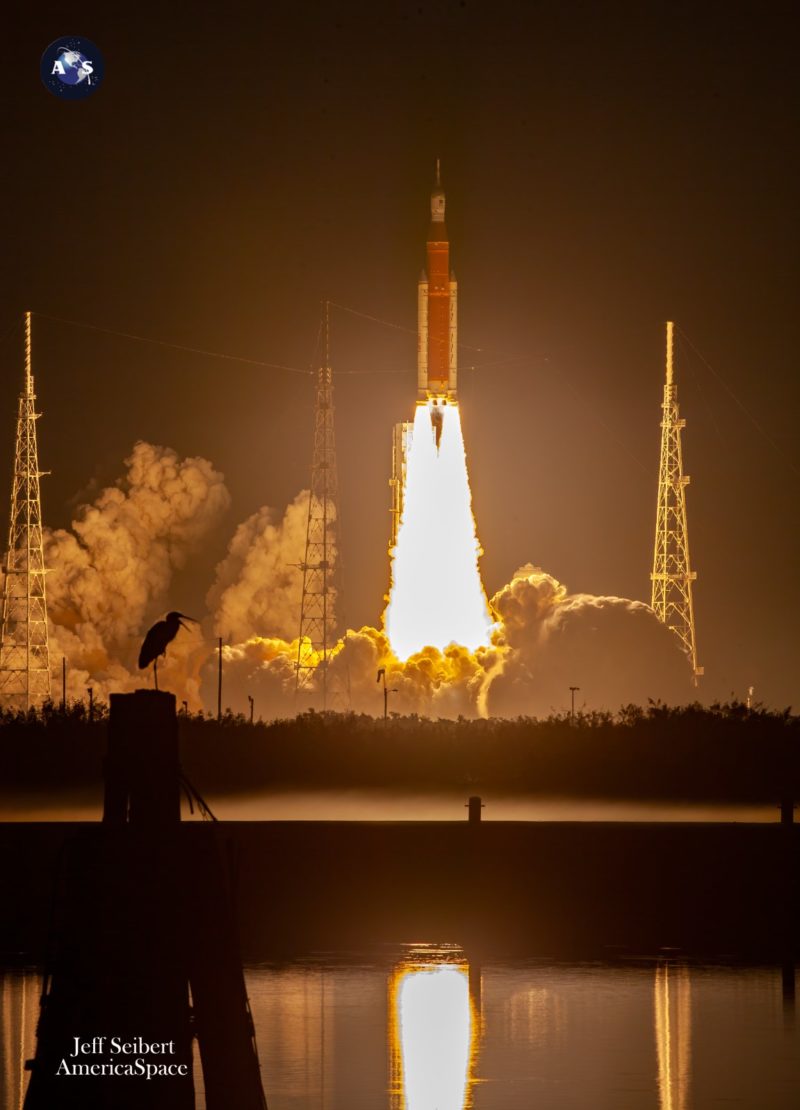
Artemis 2’s processing flow has been remarkably smooth. For eight months, the SLS and Orion programs have adhered to the tentative November 2024 launch date which was set following the completion of Artemis 1. The Artemis team’s progress reveals the wisdom inherent in the development philosophy for NASA’s flagship human space program. Prior to their first flight, SLS and Orion were regularly lambasted by the media because of their delays and cost overruns. Many commentators ignored the fact that these issues appear in almost every major aerospace project due to the inherent complexity of these endeavors.
Furthermore, NASA leveraged SLS’ 11-year development cycle to establish a mature production line and to conduct myriad subsystem tests and mission simulations. Because of these preparations, Artemis 1 was a nearly flawless success. This test flight, in turn, enabled NASA to leap into its preparations for Artemis 2 with confidence that Orion will shepherd Wiseman, Glover, Koch, and Hansen safely to the Moon and back. “The thing that blows us away is the quality and the youthfulness of the people who are working on this program,” said Wiseman. You see, not only how hard they’re working, but how motivated they are… how excited they are to be a part of this every single day. It is totally awesome.”
Missions » SLS » Artemis »




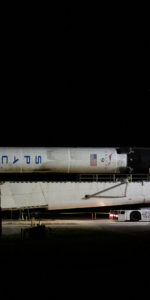
2 Comments
2 Pings & Trackbacks
Pingback:The Boosters, the Core Stage, and the Capsule: Artemis 2 Hardware Takes Shape - SPACERFIT
Pingback:The Boosters, the Core Stage, and the Capsule: Artemis 2 Hardware Takes Shape - AmericaSpace